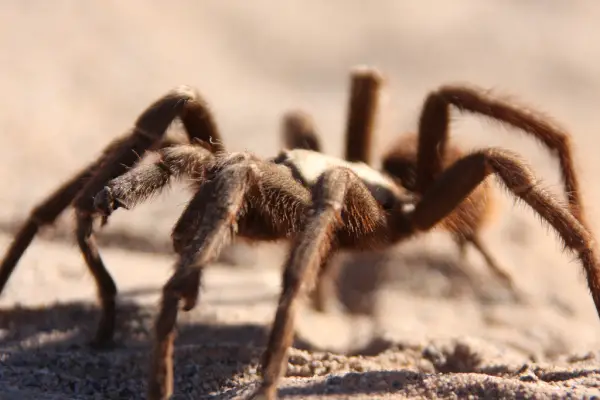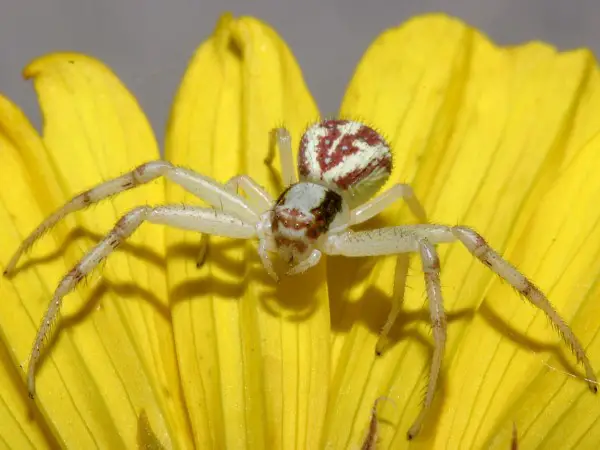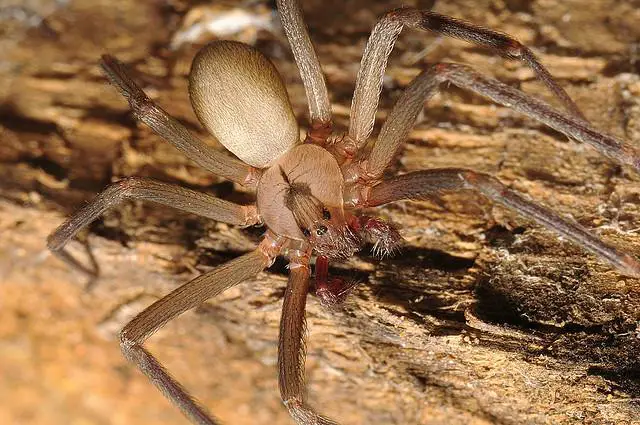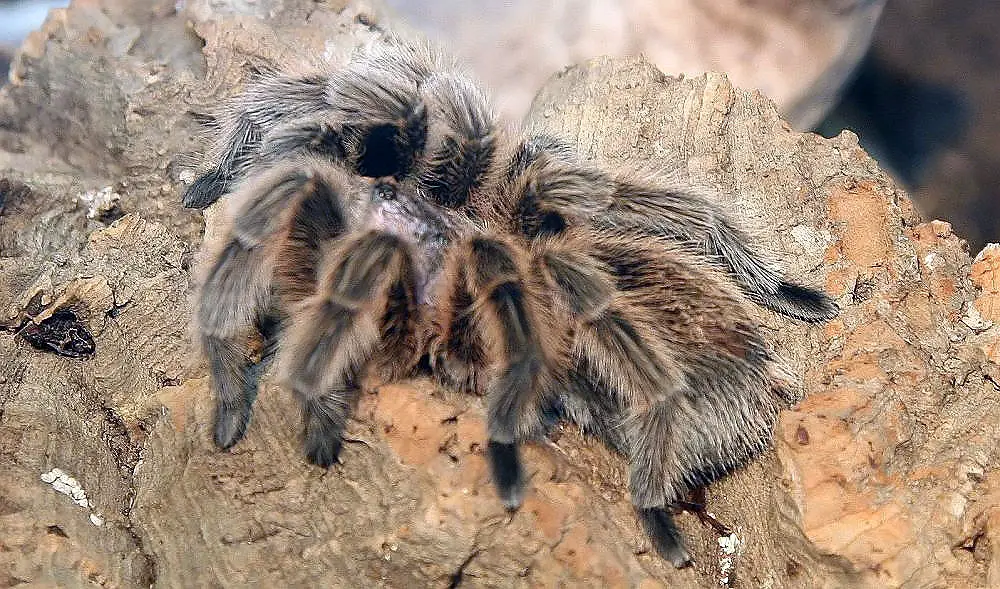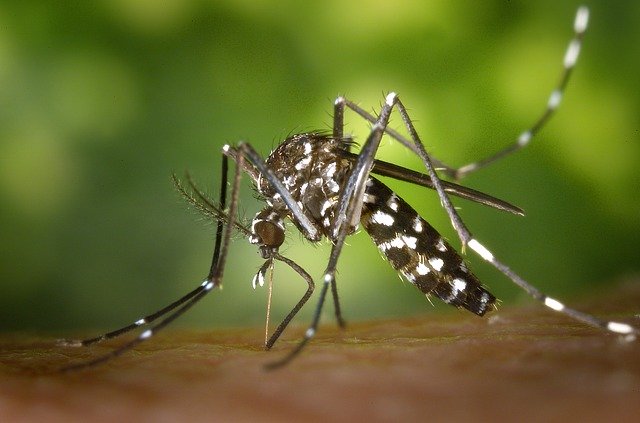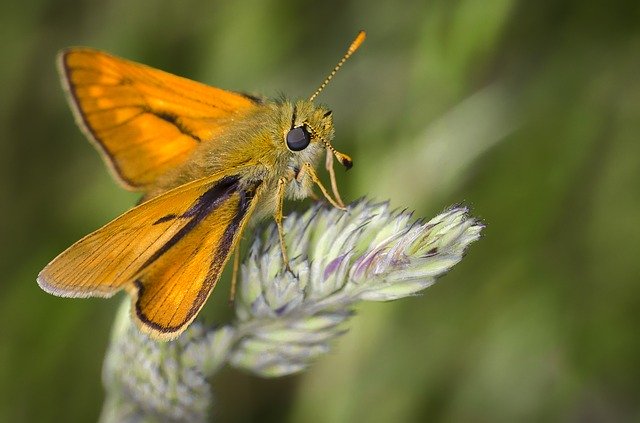Huntsman spiders are giant crab spiders. They are primarily known for their method of hunting and speed. These spiders have long legs and flattened body. Their leg joints move backwards which indeed makes the underside of legs to move forward. The tip of their feet is covered with a thick layer of hairs. The hairy feet of huntsman spider make it possible to have a firm grip on the surface and upon the kill.
Huntsman Spider Facts
Appearance and Size
- Huntsman spiders have eight small eyes which are patterned in two rows.
- The largest huntsman spider ever recorded to date measures around 30 cm span.
- The largest species of huntsman spiders are Green Huntsman and the Grey Huntsman spiders. They are commonly found in Queensland. They can stretch up to 20 cm.
Read more: the biggest spider in the world
- Many people easily recognize huntsman spiders because they are readily found skipping across your walls, or may be showing itself from your car’s visor.
- The male spider is identified by his unusual palp the tip of which is visibly swollen. It is used in mating.
- ‘Sinopoda Scurion’ is the first ever huntsman spider that does not have any eyes. Peter Jager is the scientist who discovered this eyeless spider in a cave in Laos.
- They seem to appear like crabs in size and appearance. Large huntsman species are known as ‘Wood Spiders.’
- One can easily recognize huntsman spiders by their long legs.
Check Out: Amazing Spider Facts For Kids
Behavior
- Huntsman spider is the only spider which is capable to run up vertical surfaces. They appear to be same in appearance and size as other lanky-legged spiders, but in reality they are not! Among these spiders false wolf spider is one such specie but it mostly moves on the ground and lives under logs or barks.
- Huntsman spiders are known as ‘Roaming Hunters’. Although they are capable to produce silk but they will not build web snares to seek protection. These spiders mostly inhabits in loose barks or crevices.
- They are almost entirely nocturnal. Huntsman spiders come out at night to catch medium-sized prey such as caterpillars, moths, and cockroaches. They hunt on ground as well as on tree trunks.
- The female spiders are generally larger than males but they have shorter legs and larger abdomen.
- Huntsman spiders are typically known for long lasting mating. One such species mated for about 10 hours.
- Females are not aggressive towards other males and thus they are least likely to confront each other.
- The female spins a tough web sac where she lays hundreds of eggs. These eggs are bluish-green in color. She will also defend it against any intruder but usually she is weak and timid.
- Unlike most, some huntsman spiders seem to be more social as they live in a group of more than 300 individuals. They will also guard their colony from other spiders.
- Brown huntsman spiders are mostly found in abandoned holes in buildings or houses. At times they also live in pipes.
Diet
- Huntsman spiders feed on a variety of arthropods, insects, frogs, and small lizards. True to its name, huntsman spider does not sit and wait for the prey rather it actively stalks prey.
- It feeds on many invertebrates and insects including moths, weevils, and crepuscular tenebrionid beetles but rarely on geckos and small skinks. Huntsman spiders run at a very high speed. They can also jump.
- These spiders are not used to catching prey larger their own size. However, they are able to take down prey two-thirds their own size.
- Huntsman spiders run after their prey within 3 meters of the burrow. Some large species have cannibalistic behavior.
- The spider makes the prey immobilized by its powerful fangs through which it injects its venom. At times, these bites can also harm humans in that it can lead to mild nausea and headaches.
Check Out:What Do Spiders Eat?
Habitat
Where do huntsman spiders live? Huntsman spiders typically live under loose bark of trees. They spend most of their daytime under these barks or logs. They come out at night to hunt ground-dwelling prey.
Distribution | Huntsman Spider Facts
Almost a thousand Sparassoidae species are found in the warm and temperate regions of the world. They live in Australia, Africa, Asia, Americas, and Mediterranean Basin.

